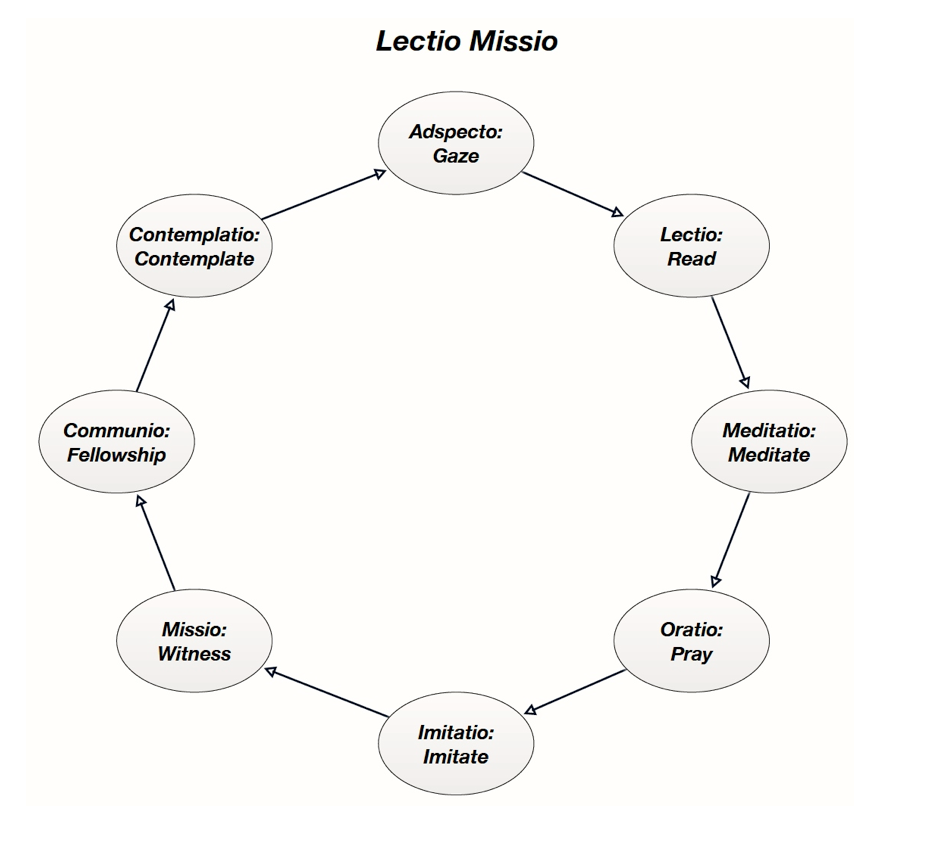I love reading. And being a parent of three daughters has further convinced me of the value of reading. When my girls were little, my favorite time of the day was reading time with them, just before they went to bed.
Spiritual Reading
In the mid 1990s I discovered the art of “spiritual reading” through the writing of Eugene Peterson.
Spiritual reading is sometimes called lectio divina. It is an ancient practice of reading and prayer. We can trace its roots back to Origen in the 3rd century. Spiritual reading is about reading Scripture, devotional works, and other spiritually edifying books, prayerfully. It’s reading slowly and with attention to the Spirit and voice of Jesus Christ. It’s not about gaining knowledge. It’s about reading for spiritual formation. It’s about listening reverently and lovingly and prayerfully and silently to Jesus’ voice. He is speaking to us through our reading. It’s about savoring Scripture and devotional reading. And it’s doing this for the sake of prayer, intimacy with God, and spiritual formation.
Spiritual reading has four movements or stages.
These four movements are:
- Reading the Bible passage slowly and prayerfully.
- Reflecting on the reading.
- Praying about the biblical passage you’re reading.
- Contemplating the meaning of the Bible reading for your life, and taking action.
I have enjoyed practicing this kind of spiritual reading for twenty years. Yet, I find it needs modification to stoke my passion for mission.
Lectio Missio
Lately, I’ve moved from spiritual reading (lectio divina) to a form of prayerful missional reading (lectio missio). I practice this in Christian community, and in my neighborhood. Practicing a form of prayerful, missional reading can stoke passion for mission. Click To Tweet
Missional reading has eight movements or stages. These ignite spiritual and missional passion. They give you a fresh and powerful way to read the Bible. They empower you to engage in mission in your neighborhood. They they enable you to hear God’s voice.
These eight movements or stages are shown in the diagram below.
It’s a mistake to see these eight movements as discrete and separate stages. While they are a movement, they are also interlocking and overlapping. It’s more a dance than a linear progression. Don’t get caught up in rigidly following the steps. They’re a guide, but you should follow the leading of the Spirit, as he shapes you for discipleship and mission.
A Dance and A Cycle
The eight movements aren’t just a dance, a movement in response to the leading of Jesus’ Spirit. They’re also a cycle. They begin with gazing on Jesus Christ, and they lead into another cycle as we gaze upon him. Here’s an image depicting the eight movements, and a description of each:

1. Focus and gaze on Jesus: Begin by gazing upon Jesus Christ (especially as revealed in the four Gospels). Read a gospel passage slowly and prayerfully and attentively. Adore Jesus. Worship him. Commit to serving him, and his mission and kingdom. Commit to imitating him—his life, ethics, holiness, compassion, justice, prayer, and so on. Gaze on his person, message, example, practices, life, death, resurrection, kingdom, mission, and gospel. See his mission as part of the missio Dei: the mission of the Father, Son, and Holy Spirit to redeem the world. His mission ushers in his rule and reign and kingdom. Meet Jesus. Love Jesus. Adore Jesus. Gaze upon him. And listen to his voice.
2. Read the Bible prayerfully, and in your neighborhood: Read Scripture and/or books prayerfully and slowly and attentively. Perhaps read a passage or page several times, waiting for a word, concept, or phrase to catch your attention. Savor the reading. Don’t be in a rush. It’s ok to try to understand a reading (and to ponder the meaning of a difficult text). But, more importantly, focus on spiritual growth and renewal. Be attentive to the Spirit and voice of Jesus Christ. Don’t just read Scripture and other texts individually and alone. Read prayerfully in community. And read prayerfully out in your neighborhood. In parks, cafes, and other public spaces, spend time reading Scripture and other books that nurture your spiritual life. Ask God to help you apply insights from these prayerful readings to the rhythms, texts, needs, hopes, and relationships in your neighborhood. Praying and reading Scripture in your neighborhood, while inviting the Spirit to open your eyes to what Jesus is doing in your neighborhood right now, will transform your praying and missional life. Don't just read scripture alone. Read IN community. And read it OUT in community. Click To Tweet
3. Meditate on the reading, listening for God’s voice: Allow the Holy Spirit to reveal meaning, and transform your heart. Savor the impression, word, concept, or phrase that caught your attention as you read. How is God speaking to you? How does he want to transform you? How is he inviting you into his mission? Is he touching your thoughts, desires, passions, memories, hopes, fears, and experiences? Is he expanding your missional imagination? How is he trying to get your attention in this moment?
4. Enter a loving conversation with God: Respond to God in prayer. Enter loving conversation with him. Make this a dialogue, not a monologue. Verbalize and, if you desire, journal your prayers. Express your prayers through the spoken word, journaling, artistry, or any other way you want.
5. Imitate the life, passion, and prayer of Christ: As you engage fully in life, imitate Christ. Imitate his love, justice, grace, hope, faith, mercy, and so on. And imitate godly exemplars, especially as you’ve met them in your readings. Embody and live out the readings. Take your readings and prayers into your everyday life. This is more than action. It’s the imitation of Christ.
6. Join with Jesus in his mission: This prayer has mission at its core. Join with the Father and Son and Holy Spirit in the missio Dei. Seek first the kingdom of God and his righteousness. Express mission afresh. Respond in missional ways to your reading and prayer. Allow your prayerful reading of the Bible to shape your theology and practice of mission. Go individually. But, more importantly, go in community. Missio and communio are interdependent. Our mission is in communion with the triune God and his people. And mission makes our communion real and rich and dynamic.
7. Immerse yourself in community (the communities of your family, church, and neighborhood): Don’t just read and pray individually—read and pray and learn and serve in community. This communion is with God and others and creation. The whole process of this prayer is communal and relational, not individualistic. You can practice parts of lectio missio But the whole process is only missional and transformational when you practice it in community. Together we announce and demonstrate and embody the kingdom of God. Together we join in the mission of God, as his Body. Together we join in the missio Dei, for the sake of the world, to the glory of God the Father.
8. Contemplate and rest in the loving presence of God: Rest in the presence of God. Be thankful. Contemplate discipleship. Contemplate new missional actions, habits, practices, commitments, and theology. Do this individually, and, preferably, with others. Respond. Embrace repentance and change and restored relationships. Pursue fresh commitments, new missional outlooks and practices, and so on. Contemplation must lead to gazing on Jesus Christ. So, this is not the end of a process, but the beginning of a new cycle of missional reading (lectio missio). Reading the Bible missionally can ignite your passion for Jesus & his mission. Click To Tweet
Missional reading is a process, a cycle, and a dance, that will reactivate your missional vitality. When practiced together, it can also inspire your friends, family, team, and church to join in the mission of God.
Missional reading can ignite your spiritual and missional passion.
It gives you a fresh and powerful way to read the Bible, engage in mission in your neighborhood, and hear God’s voice.
(A fuller description of “missional reading” and its place in missional living can be found in my book here: Graham Hill, GlobalChurch, IVP Academic, 2016, pages 437–441).








Missio Alliance Comment Policy
The Missio Alliance Writing Collectives exist as a ministry of writing to resource theological practitioners for mission. From our Leading Voices to our regular Writing Team and those invited to publish with us as Community Voices, we are creating a space for thoughtful engagement of critical issues and questions facing the North American Church in God’s mission. This sort of thoughtful engagement is something that we seek to engender not only in our publishing, but in conversations that unfold as a result in the comment section of our articles.
Unfortunately, because of the relational distance introduced by online communication, “thoughtful engagement” and “comment sections” seldom go hand in hand. At the same time, censorship of comments by those who disagree with points made by authors, whose anger or limited perspective taints their words, or who simply feel the need to express their own opinion on a topic without any meaningful engagement with the article or comment in question can mask an important window into the true state of Christian discourse. As such, Missio Alliance sets forth the following suggestions for those who wish to engage in conversation around our writing:
1. Seek to understand the author’s intent.
If you disagree with something the an author said, consider framing your response as, “I hear you as saying _________. Am I understanding you correctly? If so, here’s why I disagree. _____________.
2. Seek to make your own voice heard.
We deeply desire and value the voice and perspective of our readers. However you may react to an article we publish or a fellow commenter, we encourage you to set forth that reaction is the most constructive way possible. Use your voice and perspective to move conversation forward rather than shut it down.
3. Share your story.
One of our favorite tenants is that “an enemy is someone whose story we haven’t heard.” Very often disagreements and rants are the result of people talking past rather than to one another. Everyone’s perspective is intimately bound up with their own stories – their contexts and experiences. We encourage you to couch your comments in whatever aspect of your own story might help others understand where you are coming from.
In view of those suggestions for shaping conversation on our site and in an effort to curate a hospitable space of open conversation, Missio Alliance may delete comments and/or ban users who show no regard for constructive engagement, especially those whose comments are easily construed as trolling, threatening, or abusive.